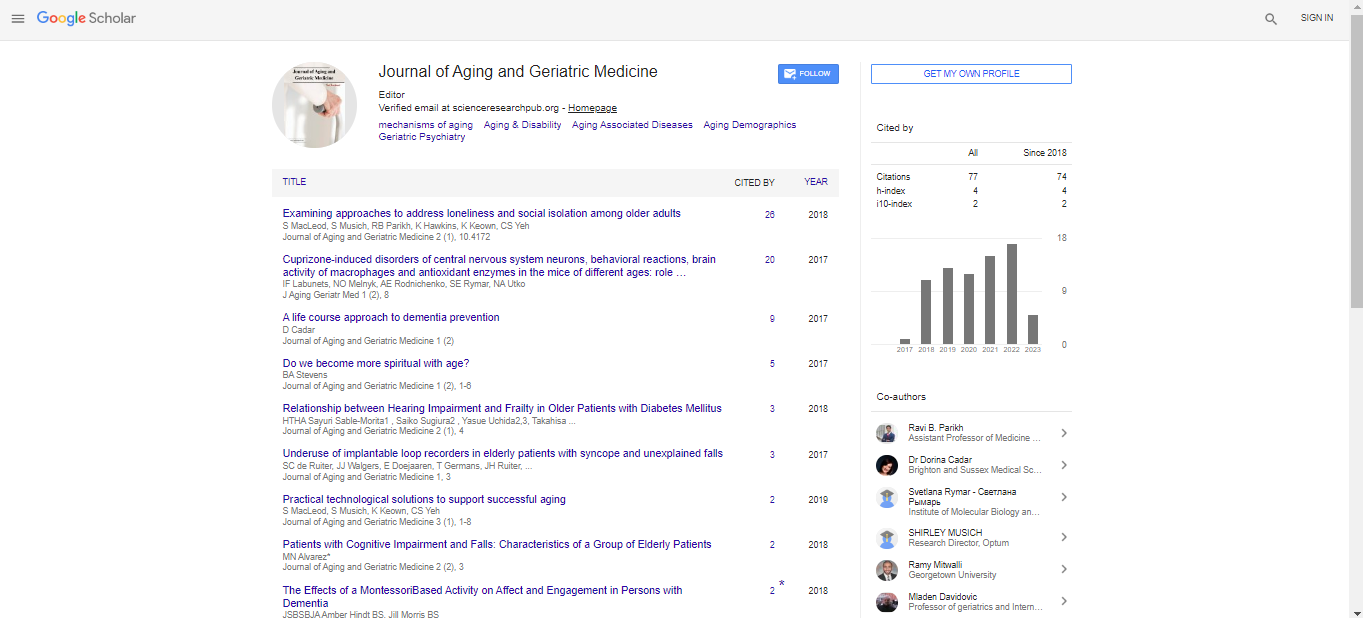Commentary, J Aging Geriatr Med Vol: 8 Issue: 1
Osteoporosis: Cause of Fragility Fractures in Older Adults
Raigo Tinho*
Department of Medicine and Psychiatry, University of Cantabria, IDIVAL, Santander, Spain
- *Corresponding Author:
- Raigo Tinho
Department of Medicine and Psychiatry,
University of Cantabria,
IDIVAL,
Santander,
Spain
E-mail: raigo_tinho@gmail.com
Received date: 04 November, 2023, Manuscript No. AGM-23-119223;
Editor assigned date: 07 November, 2023, PreQC No. AGM-23-119223 (PQ);
Reviewed date: 21 November, 2023, QC No. AGM-23-119223;
Revised date: 15 August, 2024, Manuscript No. AGM-23-119223 (R);
Published date: 22 August, 2024, DOI: 10.4172/2576-3946.1000189
Citation: Tinho R (2024) Osteoporosis: Cause of Fragility Fractures in Older Adults. J Aging Geriatr Med 8:1.
Description
The vertebrae in the spine, the forearm, wrist, and hip bones are among the bones that fracture often. Usually, there are no symptoms until a fractured bone occurs. Bones can deteriorate to the point where they shatter easily under light force or on their own. The individual may experience persistent discomfort and a diminished capacity to do daily tasks following the healing of the fractured bone. Low bone mass, micro-architectural degeneration of bone tissue resulting in bone sterility, and an increase in fracture risk are the hallmarks of osteoporosis, a systemic skeletal condition. It is the most typical cause of a fractured bone in the senior population.
After 50 years of age, the frequency of fragility fractures rises gradually, and the aging of the population will cause a larger percentage of the global population to have osteoporosis and fractures. In older persons, the effects of fractures are more severe: All lowtrauma fractures were linked to an increased risk of death, and the agerelated increase in risk of a subsequent major osteoporotic fracture after an initial one was also observed. Fall risk assessment is an integral component of fracture risk assessment, since it contributes significantly to the development of fragility fractures in older persons along with the decline in bone mineral density. Even though there have been advancements in the diagnosis of osteoporosis, the evaluation of fracture risk, and the availability of a wide variety of effective anti-osteoporosis medications, including parenteral routes that can improve observance, numerous data points to a significant therapeutic care gap, which is especially evident in the elderly, who place a high value on treatment and are even more so in those who are institutionalized.
As people age, osteoporosis becomes increasingly prevalent. The afflicted population is around 15% of Caucasians in their 50s and 70% of those over 80. In women than in males, it is more prevalent. Depending on the diagnosing technique, 2% to 8% of men and 9% to 38% of women in the industrialized world are afflicted. It's uncertain how common diseases are in poorer nations. Osteoporosis affected over 22 million women and 5.5 million men. The Greek words meaning "porous bones" are the source of the word "osteoporosis".
Osteoporosis is known as a "silent" illness as it usually shows no symptoms and may not even be detected until a bone is broken. For elderly men and women who have gone through menopause, osteoporosis is the main cause of fractures. Although fractures can occur in any bone, they most frequently occur in the hip bones, vertebrae in the spine, and wrist. Osteoporosis is the term for the disorder where bones lose their ability to heal and renew as people age. The bone structure is composed of living tissue, much like all other bodily parts. Even though it might not seem like it, they replenish their own cells and tissue all throughout their lifetimes. Up until about the age of thirty, the body naturally produces more bone than it breaks. After the age of 35, bone mass steadily diminishes because the body can no longer heal damaged bones as quickly.
Conclusion
Osteoporosis, fall risk, and the aftermath of a fall are the three primary risk factors for fracture in the elderly. Every year, 50% of elderly care residents and 30% of those living in the community have falls, which increases their risk of hip fractures and other osteoporotic fractures. The most vulnerable, most at risk for fractures and falls, and most difficult to manage are elderly patients in care institutions and hospitals. This group's risk of falls and fractures is typically multifactorial, and there is frequently no chance to mitigate these risks. Medications that are most frequently linked to fall hazards and that older people should use with caution.
 Spanish
Spanish  Chinese
Chinese  Russian
Russian  German
German  French
French  Japanese
Japanese  Portuguese
Portuguese  Hindi
Hindi 